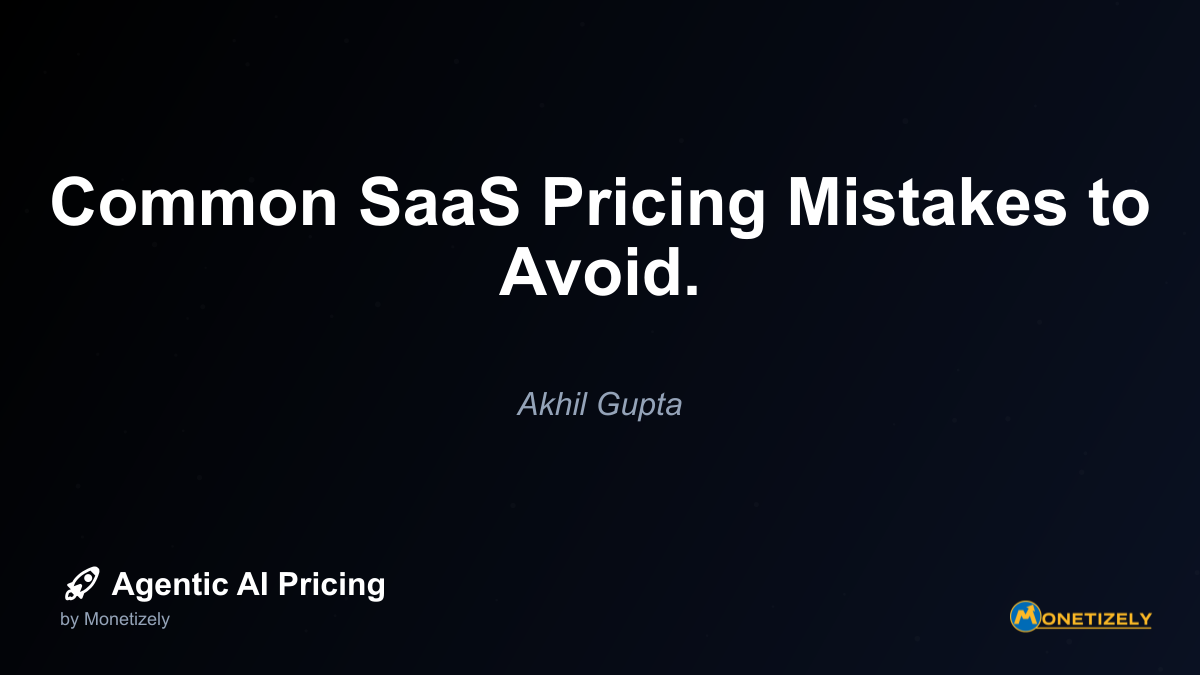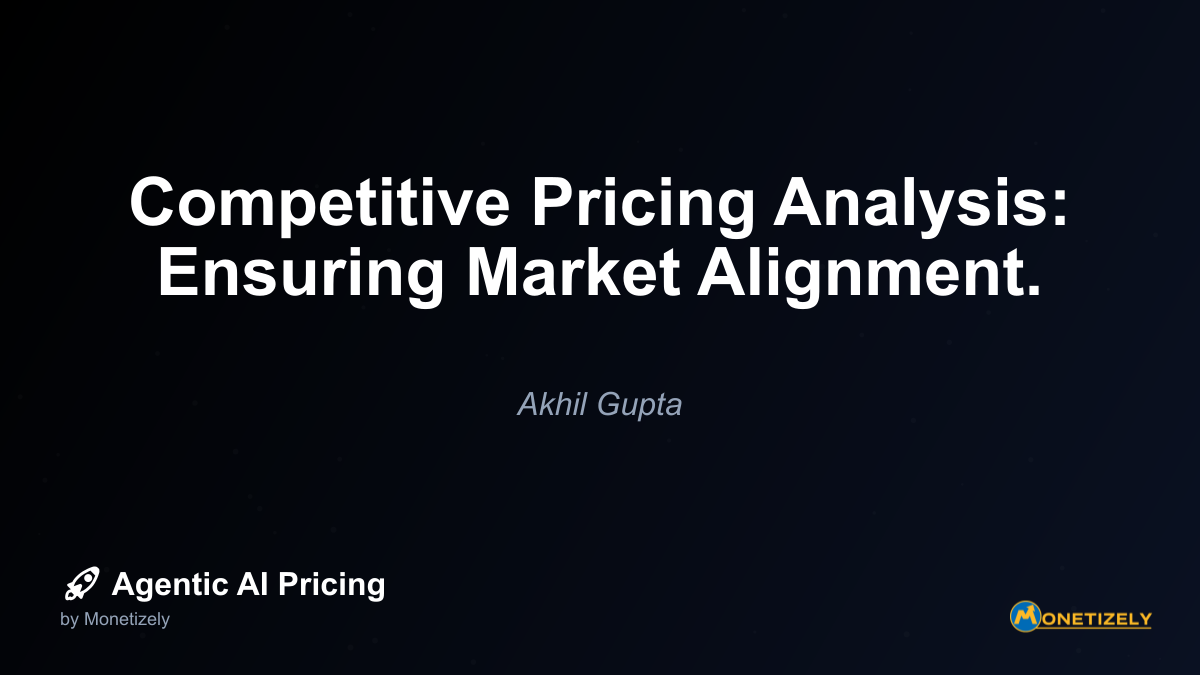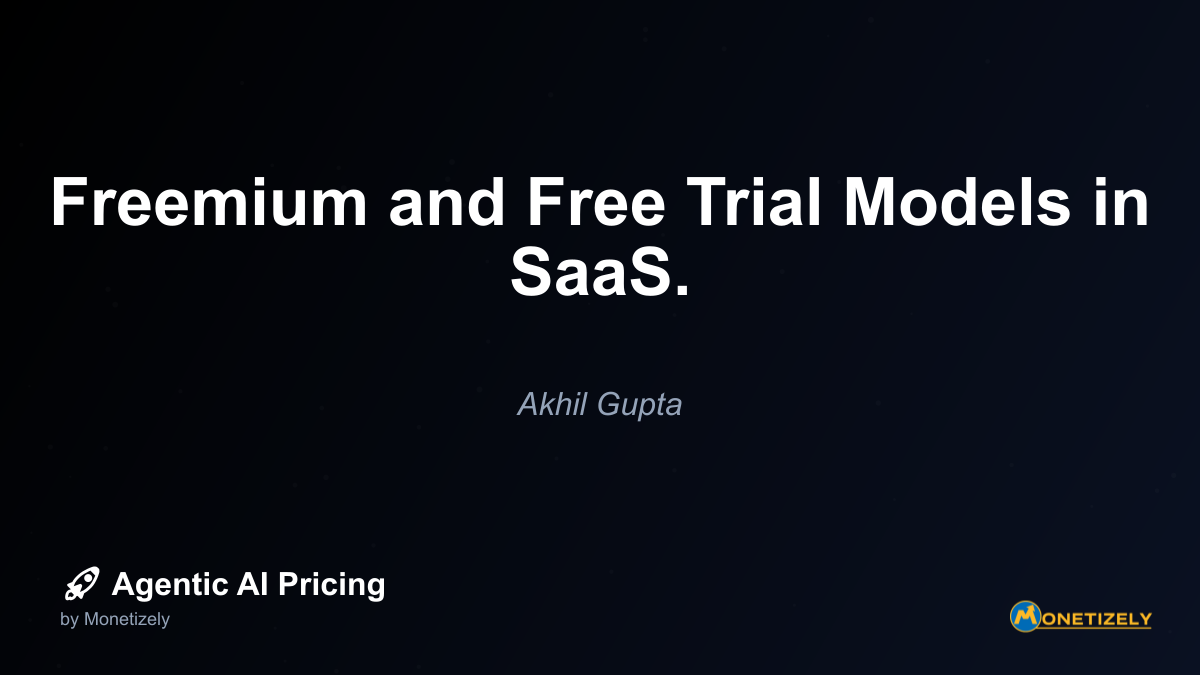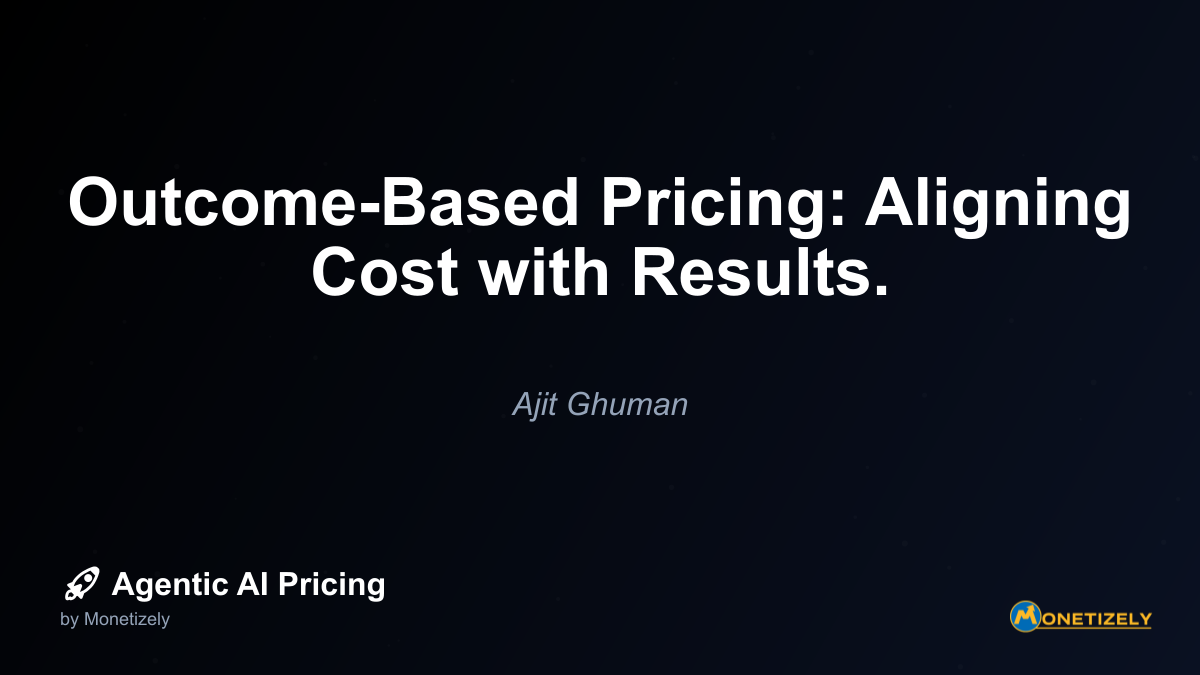· Akhil Gupta · Pricing Fundamentals · 10 min read
Metrics That Matter for Pricing (ARPU, LTV, Churn, etc.)
AI and SaaS Pricing Masterclass
Learn the art of strategic pricing directly from industry experts. Our comprehensive course provides frameworks and methodologies for optimizing your pricing strategy in the evolving AI landscape. Earn a professional certification that can be imported directly to your LinkedIn profile.

In today’s competitive SaaS landscape, pricing strategy extends far beyond setting dollar amounts. The most successful companies understand that pricing decisions directly influence core business metrics that determine long-term viability and growth potential. While many organizations focus exclusively on acquisition metrics, the true indicators of pricing effectiveness lie in metrics like Average Revenue Per User (ARPU), Customer Lifetime Value (LTV), and churn rates.
These metrics provide critical insights into how pricing strategies resonate with customers, impact revenue sustainability, and drive profitability. As agentic AI transforms pricing capabilities, understanding these fundamental metrics becomes even more crucial for optimizing pricing structures.
This guide explores the essential metrics for evaluating pricing effectiveness, explains their interrelationships, and demonstrates how strategic pricing adjustments can positively influence these key performance indicators.
Understanding ARPU (Average Revenue Per User)
ARPU represents one of the most straightforward yet powerful metrics for assessing pricing performance. At its core, ARPU measures the average revenue generated by each customer over a specific period, typically calculated monthly or annually.
How to Calculate ARPU
The ARPU formula is deceptively simple:
ARPU = Total Revenue / Total Number of UsersHowever, this simplicity masks important nuances. For SaaS companies, “users” might refer to individual accounts, seats, or organizations depending on the pricing model. When calculating ARPU, consistency in defining your user base is essential for meaningful analysis.
Why ARPU Matters for Pricing Strategy
ARPU serves as a direct reflection of your pricing strategy’s effectiveness. A low ARPU relative to your industry might indicate pricing that’s too conservative or a product mix that fails to capture full customer value. Conversely, an unusually high ARPU could suggest premium positioning or potential vulnerability to competitors offering similar value at lower price points.
Beyond competitive positioning, ARPU provides critical insights for:
Product Development Prioritization: Higher ARPU customer segments often justify greater feature development investment.
Expansion Planning: Understanding ARPU by market segment helps identify the most profitable expansion opportunities.
Investor Relations: ARPU growth demonstrates pricing power and value delivery to investors.
How Pricing Models Impact ARPU
Different pricing approaches create distinct ARPU patterns:
Tiered Pricing Models: Tiered structures typically increase ARPU by encouraging customers to select higher-value packages as their needs grow. The key metric to watch is the distribution of customers across tiers and their migration patterns over time.
Usage-Based Pricing: Usage models often start with lower ARPU but can scale dramatically with customer adoption. The relationship between usage growth and ARPU becomes critical to monitor.
Seat-Based Pricing: This model directly ties revenue to user expansion, making ARPU relatively stable while total customer value grows with adoption.
Value-Based Pricing: When executed effectively, value-based approaches often yield the highest ARPU by aligning price with delivered outcomes rather than costs or competitive benchmarks.
For agentic AI applications, ARPU often reflects a hybrid model, combining base subscriptions with usage components that scale with AI processing requirements or outcomes delivered.
Maximizing Customer Lifetime Value (LTV)
While ARPU provides a snapshot of current revenue generation, Customer Lifetime Value (LTV) projects this value across the entire customer relationship. This forward-looking metric is essential for evaluating long-term pricing strategy effectiveness.
How to Calculate LTV
The standard LTV calculation multiplies ARPU by the average customer lifespan:
LTV = ARPU × Average Customer LifespanWhere the average customer lifespan is typically calculated as:
Average Customer Lifespan = 1 / Churn RateFor more sophisticated analysis, many organizations incorporate contribution margin to focus on profitable lifetime value:
LTV = (ARPU × Gross Margin %) / Churn RateWhy LTV Is Critical for Pricing Strategy
LTV serves as the ultimate arbiter of pricing strategy success by measuring the total economic value derived from customer relationships. High LTV indicates strong value delivery that sustains long-term relationships, while low LTV suggests either pricing inefficiency or product-market fit challenges.
Strategic applications of LTV include:
Customer Acquisition Investment: LTV establishes the ceiling for sustainable customer acquisition cost (CAC), with most successful SaaS companies maintaining an LTV:CAC ratio of 3:1 or higher.
Segment Prioritization: LTV comparisons across customer segments reveal where pricing models deliver the greatest long-term value.
Pricing Model Validation: When testing new pricing structures, projected changes in LTV provide the most comprehensive assessment of potential impact.
How Pricing Influences LTV
Pricing strategy affects LTV through multiple mechanisms:
Initial Price Point: Higher initial pricing increases ARPU but may reduce customer lifespan if value perception doesn’t match the premium.
Expansion Revenue Mechanisms: Pricing models that facilitate natural expansion (through additional users, features, or usage) extend customer lifespan while increasing ARPU.
Discount Structures: Short-term discounts may accelerate acquisition but can reduce LTV if they attract price-sensitive customers with higher churn propensity.
Contract Terms: Longer contract commitments directly extend minimum customer lifespan, though forced commitments without corresponding value can damage renewal rates.
The most effective pricing strategies for maximizing LTV typically incorporate:
- Value metrics that grow naturally with customer success
- Expansion paths that align with customer maturity
- Price fencing that segments customers based on willingness to pay
- Strategic discounting that rewards commitment rather than merely reducing barriers to entry
Managing Churn Rate Through Pricing Strategy
Churn rate—the percentage of customers who discontinue service within a given period—represents the inverse of retention and directly impacts customer lifespan calculations. While product value and customer experience significantly influence churn, pricing strategy plays an equally important role in retention outcomes.
How to Calculate Churn Rate
Churn is typically calculated as:
Churn Rate = Customers Lost in Period / Total Customers at Start of PeriodFor subscription businesses, revenue churn often provides more insight than customer churn:
Revenue Churn = Revenue Lost in Period / Total Revenue at Start of PeriodNegative churn (net revenue retention >100%) occurs when expansion revenue from existing customers exceeds lost revenue from churned customers—the ideal scenario for sustainable growth.
Why Churn Matters for Pricing Strategy
Churn directly impacts LTV calculations and serves as a lagging indicator of pricing-value alignment. High churn rates often indicate pricing that exceeds delivered value, while low churn suggests strong value perception relative to price.
Churn analysis reveals:
Price Sensitivity by Segment: Comparing churn rates across price points identifies optimal pricing thresholds.
Expansion Effectiveness: Expansion revenue that outpaces churn demonstrates pricing structures that grow with customer value.
Competitive Vulnerability: Sudden churn increases may indicate competitive pricing pressure.
How Pricing Models Impact Churn
Different pricing approaches create distinct churn patterns:
Value-Based Pricing: When executed effectively, value-based pricing typically yields the lowest churn rates by aligning costs directly with perceived benefits.
Freemium Models: Freemium approaches often produce high customer churn but can maintain low revenue churn by converting the most engaged users to paid tiers.
Cost-Plus Pricing: This traditional approach typically results in higher churn as it fails to align with customer value perception.
Competitive-Based Pricing: Pricing based primarily on competitive positioning creates vulnerability to market disruption and often leads to churn spikes when competitors adjust their strategies.
Effective churn management through pricing includes:
- Aligning price increases with demonstrated value delivery
- Creating pricing tiers that allow customers to self-select appropriate value levels
- Implementing expansion revenue mechanisms that grow with customer success
- Developing downgrade paths as alternatives to cancellation
The Interconnected Nature of Pricing Metrics
While we’ve examined ARPU, LTV, and churn individually, these metrics function as an interconnected system rather than isolated indicators. Understanding these relationships is essential for comprehensive pricing optimization.
The ARPU-Churn Relationship
ARPU and churn often exhibit an inverse correlation—higher prices increase ARPU but may elevate churn if value delivery doesn’t match the premium positioning. The optimal balance point maximizes the product of ARPU and retention rate.
This relationship explains why many successful SaaS companies maintain multiple pricing tiers: lower-priced options capture price-sensitive customers who would otherwise churn, while premium tiers maximize ARPU from customers with higher willingness to pay.
The LTV-CAC Efficiency Ratio
The ratio between LTV and customer acquisition cost (CAC) determines the ultimate efficiency of your growth model. Pricing strategy directly influences this ratio through its impact on both LTV and conversion rates.
Most venture-backed SaaS companies target an LTV:CAC ratio of 3:1 or higher, with ratios below 2:1 generally indicating unsustainable economics. Pricing optimization often provides the most direct path to improving this critical ratio.
Expansion Revenue and Net Revenue Retention
For established SaaS companies, expansion revenue—additional revenue from existing customers—frequently outpaces new customer acquisition as the primary growth driver. Pricing structures that facilitate natural expansion create the foundation for sustainable growth.
Net revenue retention (NRR), which measures the percentage of revenue retained from existing customers including expansions and contractions, serves as the comprehensive metric for assessing expansion effectiveness. Elite SaaS companies maintain NRR above 120%, indicating that their customer base grows organically through expanded usage and adoption.
Leveraging Agentic AI for Pricing Metric Optimization
As agentic AI transforms pricing capabilities, organizations gain unprecedented ability to monitor, analyze, and optimize these critical metrics. AI-powered pricing systems can:
Identify Pricing-Sensitive Segments: Detect customer cohorts with elevated price sensitivity through behavioral analysis.
Predict Churn Risk: Forecast potential churn based on usage patterns, feature adoption, and comparative analysis.
Optimize Price Points: Dynamically adjust pricing to maximize LTV across different customer segments.
Personalize Expansion Offers: Generate tailored expansion recommendations based on usage patterns and growth potential.
Simulate Pricing Changes: Model the impact of pricing adjustments on ARPU, churn, and LTV before implementation.
These capabilities transform pricing from a periodic strategic exercise to a continuous optimization process that responds to market dynamics in real-time.
Implementing a Metrics-Driven Pricing Strategy
Transitioning to a metrics-driven pricing approach requires systematic implementation across the organization. Key steps include:
1. Establish Baseline Metrics
Before making pricing adjustments, document current performance across all key metrics:
- ARPU by customer segment
- Churn rate and retention patterns
- Customer lifetime value
- Expansion revenue percentage
- Conversion rates by pricing tier
2. Define Target Improvements
Based on competitive benchmarking and financial requirements, establish specific improvement targets for each metric:
- ARPU growth objectives
- Maximum acceptable churn thresholds
- Target LTV:CAC ratios
- Desired net revenue retention
3. Implement Measurement Infrastructure
Ensure your systems can accurately track all relevant metrics:
- Customer relationship management (CRM) integration
- Billing system analytics
- Usage monitoring capabilities
- Cohort analysis tools
4. Test Pricing Adjustments
Rather than implementing wholesale changes, test pricing modifications through:
- New customer segments
- Geographic variations
- Feature-based price fencing
- Limited-time promotions
5. Analyze Impact Across All Metrics
When evaluating test results, examine effects across the entire metrics ecosystem:
- Immediate ARPU impact
- Conversion rate changes
- Early indicators of retention effects
- Customer satisfaction measures
6. Iterate Based on Results
Use test outcomes to refine your pricing strategy:
- Expand successful approaches
- Modify underperforming elements
- Develop new hypotheses for further testing
Common Pitfalls in Pricing Metrics Analysis
Even sophisticated organizations frequently encounter challenges when analyzing pricing metrics. Common pitfalls include:
1. Focusing on Single Metrics in Isolation
Optimizing for ARPU alone might inadvertently increase churn, while minimizing churn at all costs could significantly reduce revenue potential. The most effective pricing strategies optimize for LTV, which inherently balances ARPU and retention.
2. Ignoring Segment-Specific Metrics
Aggregate metrics often mask critical variations across customer segments. Enterprise customers typically exhibit different ARPU, churn, and expansion patterns compared to small business users. Segment-specific analysis reveals opportunities for targeted pricing optimization.
3. Neglecting the Time Dimension
Pricing impacts manifest over different timeframes—ARPU changes immediately, while retention effects emerge over months or years. Short measurement windows can lead to misleading conclusions about pricing effectiveness.
4. Misattributing Causality
Correlation between pricing changes and metric movements doesn’t necessarily indicate causation. External factors, product changes, or market shifts may drive metric changes independently of pricing adjustments.
5. Overlooking Competitive Dynamics
Pricing metrics exist within a competitive context. A strategy that optimizes internal metrics but ignores competitive positioning may succeed temporarily but prove unsustainable as competitors respond.
Conclusion: Building a Metrics-Informed Pricing Culture
Transforming pricing from an intuitive art to a metrics-driven science requires more than analytical tools—it demands organizational culture change. The most successful companies integrate pricing metrics throughout their operations:
- Product teams incorporate pricing metrics into feature prioritization
- Marketing teams align acquisition strategies with target LTV profiles
- Customer success organizations focus on expansion opportunities to drive net revenue retention
- Executive teams regularly review pricing metrics as core business indicators
By establishing this metrics-informed pricing culture, organizations create a foundation for sustainable growth and competitive advantage. As agentic AI continues to transform pricing capabilities, the companies that master these fundamental metrics will be best positioned to leverage advanced technologies for pricing optimization.
The journey toward pricing excellence begins with measurement. By understanding and optimizing ARPU, LTV, churn, and their interrelationships, organizations create the foundation for sustainable growth and long-term market leadership.
Co-Founder & COO
Akhil is an Engineering leader with over 16+ years of experience in building, managing and scaling web-scale, high throughput enterprise applications and teams. He has worked with and led technology teams at FabAlley, BuildSupply and Healthians. He is a graduate from Delhi College of Engineering and UC Berkeley certified CTO.
Pricing Strategy Audit
Let our experts analyze your current pricing strategy and identify opportunities for improvement. Our data-driven assessment will help you unlock untapped revenue potential and optimize your AI pricing approach.




